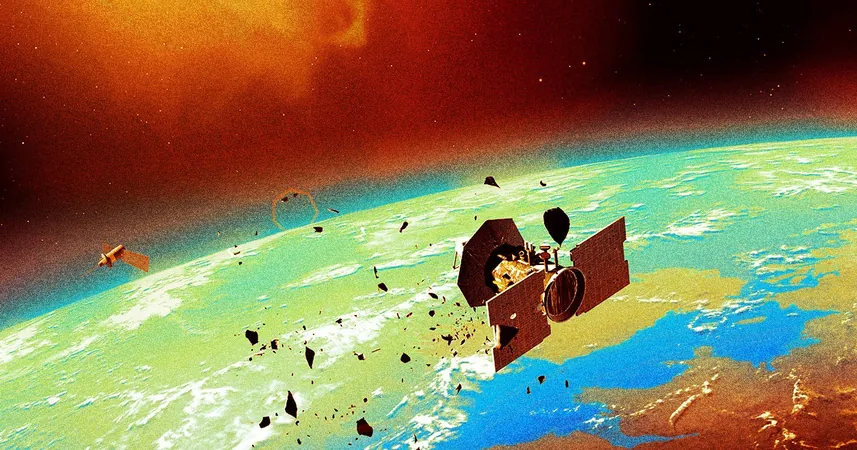
Space Junk Catastrophe Looming: Are We Ready for the Inevitable Collision?
2024-10-09
Author: Ming
A Cosmic Crisis on Our Horizon
Scientists from the orbital tracking company LeoLabs have issued a stark warning: a massive disaster caused by space debris is no longer a distant threat; it's looming on the immediate horizon. With nearly 30,000 objects larger than a softball orbiting our planet at high velocities, the potential for catastrophic collisions is escalating at an alarming rate.
Darren McKnight, a senior technical fellow at LeoLabs, likened the situation to a “ticking time bomb” in an interview with Forbes, underscoring the urgency of addressing the growing menace of space junk. If left unregulated and unchecked, a collision is not a question of “if” but rather “when.”
The Damaging Impact of Debris
LeoLabs is capable of tracking fragments as small as four inches in diameter, but even smaller debris poses a grave risk. Experts emphasize that even tiny fragments can be lethal to astronauts. Dan Ceperley, COO of LeoLabs, highlighted a near-miss in 2021 when a minute piece of debris damaged the Canadarm2, a crucial robotic arm on the International Space Station (ISS).
The danger isn't confined to astronauts. The presence of numerous small but supersonic objects in Earth's orbit could lead to unpredictable and potentially devastating chain reactions, further complicating the already precarious space environment.
Historical Negligence and Future Risks
The history of space missions, particularly during the Cold War, left a legacy of unaccounted-for debris. Discarded rocket stages from both the United States and the former Soviet Union clutter the highest altitudes of low Earth orbit. Notably, a near-collision between American and Soviet upper stages in June 2022 saw these remnants come alarmingly close—just 500 feet apart.
This accumulation of debris not only poses risks to active satellites and crewed missions but also triggers a phenomenon known as Kessler Syndrome, where the density of objects in low Earth orbit is high enough to trigger a cascade of collisions, overwhelming our ability to manage space traffic.
Global Cooperation Needed to Mitigate Catastrophe
With rising participation in space ventures from countries like China, the imperative for international cooperation on debris mitigation has never been more pressing. Ian Christensen, senior director at the Secure World Foundation, emphasized the challenge of uniting major spacefaring nations responsible for 90% of space debris risks—namely the U.S., Russia, and China—towards a collective cleanup initiative.
If these nations fail to engage in effective remediation strategies, we could swiftly find ourselves facing a crisis echoing the apocalyptic scenarios depicted in countless science fiction narratives. The time to act is now—before the final countdown begins.
The Future of Space Debris Cleanup
Beyond the dire warnings, there is glimmering hope. Innovative proposals and technologies are being devised to tackle the space debris dilemma, such as deploying specialized satellites designed to capture and deorbit dangerous fragments. The future of space exploration depends on our willingness to clean up our cosmic neighborhood, ensuring that we safely navigate the stars without leaving a trail of destruction in our wake.
As we look to the heavens, the question remains: are we ready for the impending fallout from our careless past, or will we turn a blind eye until it’s too late?


 Brasil (PT)
Brasil (PT)
 Canada (EN)
Canada (EN)
 Chile (ES)
Chile (ES)
 España (ES)
España (ES)
 France (FR)
France (FR)
 Hong Kong (EN)
Hong Kong (EN)
 Italia (IT)
Italia (IT)
 日本 (JA)
日本 (JA)
 Magyarország (HU)
Magyarország (HU)
 Norge (NO)
Norge (NO)
 Polska (PL)
Polska (PL)
 Schweiz (DE)
Schweiz (DE)
 Singapore (EN)
Singapore (EN)
 Sverige (SV)
Sverige (SV)
 Suomi (FI)
Suomi (FI)
 Türkiye (TR)
Türkiye (TR)